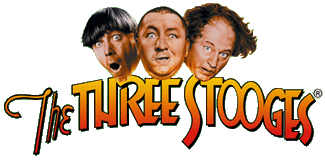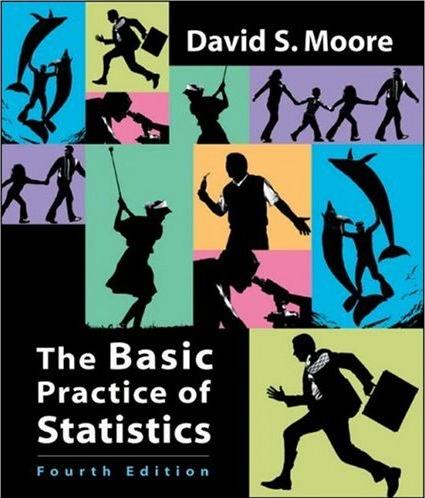

COURSE: MATH 1530-017
CALL #10355
TIME AND PLACE: 2:15-3:35 T in Gilbreath 306 ("The Stat Cave") and 2:15-3:35 R in Gilbreath 304 ("The Mansion")
INSTRUCTORS: Dr. Bob Gardner and Dr. Robert Davidson
OFFICES: Room 308F of Gilbreath Hall (Gardner) and Room 308C of Gilbreath Hall (Davidson)
OFFICE HOURS: 1:45-2:15 & 3:35-4:05 TR (Gardner), 3:35-4:35 TR (Davidson)
PHONE: 439-6979 (Gardner), 439-6690 (Davidson), Math Department Office: 439-4349
E-MAILS: gardnerr@etsu.edu (Gardner),
davidson@etsu.edu (Davidson)
WEBPAGE FOR GARDNER: See Gardner's webpage for
a copy of this course syllabus, copies of the classnotes in PDF form, and updates for the course:
http://www.etsu.edu/math/gardner/gardner.htm.
WEBPAGES FOR THIS CLASS: A copy of this syllabus is posted online at:
 Standard Edition |
 ETSU Custom Edition |
GRADING: There are a possible 1,000 points in this class, plus up to 50 bonus points for good attendance. The 1,000 points are distributed as follows:
| Total Points | Grade |
| Exam 1: Test and Solutions. | Exam 2: Test and Solutions. |
| 1/15 | 3/12 | ||
| |
|
3/17 | |
| 1/22 | 3/19 | ||
| 1/27 | 3/24 | ||
| 1/29 | 3/26 | ||
| 2/3 | 3/31 | ||
| 2/5 | 4/2 | ||
| 2/10 | 4/7 | ||
| 2/12 | 4/9 | ||
| 2/17 | 4/14 | ||
| 2/19 | 4/16 | ||
| 2/24 | Results of the survey |
4/21 | |
| 2/26 | 4/23 | ||
| 3/3 | 4/28 | ||
| 3/5 | 4/30 | ||
| 3/10 | 5/2 |
MATH LAB: The Mathematics Laboratory is located in Room 309 of Warf-Pickle Hall.
It is staffed by graduate students and upper level undergraduates.
They are there to help you! Hours of operation are (tentatively)
Monday-Thursday 11:00-7:00, Sunday 1:00-5:00. The
phone number is 439-7611. The Math Hotline is 439-7887 (for short questions). Your precious tuition dollars help fund the Math Lab, so take advantage of it. If you find that you are having trouble in this class, then you should make yourself a "frequent flyer" at the Math Lab!
STATISTICS HELP SESSIONS: Help sessions will be conducted in the "Stat Cave" (Gilbreath 306) by Math Department graduate assistants. The help sessions are scheduled for 4:00-7:00 pm on Tuesdays (Anna Davis) and Wednesdays (Romual Tchouta), and 9:00 am to noon on Fridays (Romual Tchouta). Since these sessions are being held in the Stat Cave, you can get help on homework problems as well as the use of Minitab.
STUDENT SUPPORT SERVICES: Student Support Services provides free individual tutoring to qualified individuals through their NEXUS program. The criteria state that the student must be: (1) a first-Generation College student, meaning,
neither of your natural parents has completed a four-year college degree, (2) income eligible, or (3) a student with a documented disability. For more details, see:
NOTE: The text defines statistics as "the science of data" (page 3). More specifically, we want to take data (sometimes, we will even collect data ourselves) and put it in a form which is easier to understand than the simple "raw data." We will represent the data graphically and also use certain numbers to reveal properties of the data. We will discuss sampling populations and make inferences about a population based on a sample. Probability is used in the level of confidence we can put in these inferences. The ideas presented in this class will be the foundation on which any other statistics class you may take if you are majoring in criminal justice/criminology, psychology, sociology, education, business, biology, public health, ...
USE OF THREE STOOGES FILMS AS A SOURCE OF DATA: This class will take a novel approach to illustrating many of the ideas illustrated in the text: Data based on the films of the Three Stooges will be used in examples and exercises!
We know that many of you may be anxious about this class. Studies have indicated that the use of popular culture in the classroom can help alleviate some of this anxiety. In addition, you will have the opportunity to actually gather your own data! This is rare in this level of class and will expose you to an experience beyond just dealing with "canned data" presented in the text or in a data file. However, do not think that this class will be any easier than any of the other sections of Probability and Statistics... nor will this class be any harder. We will still cover many of the standard examples from the text and all of the homework assignments are from the text. Though this class will be no easier or harder than the other sections, we do expect it to be more fun! Nyuk, nyuk, nyuk!!!
STUDENT SUCCESS: The Math Department makes the following suggestions for success:

Chapter 1 - Picturing Distributions with Graphs | Reply to the e-mail from Gardner (2 "Daily Quiz" points) |
|
Stooge Directors Worksheet (Printed Copy Due 2/3) You are now ready to take the Chapter 1 Practice Quiz |
||
Substitute Lecturer: John Hicks | ||
You are now ready to take the Chapter 2 Practice Quiz |
||
You are now ready to take the Chapter 3 Practice Quiz |
||
You are now ready to take the Chapter 4 Practice Quiz |
||
You are now ready to take the Chapter 5 Practice Quiz |
||
You are now ready to take the Chapter 6 Practice Quiz |
||
You are now ready to take the Chapter 8 Practice Quiz |
||
You are now ready to take the Chapter 9 Practice Quiz |
||
Chapter 10 - Introducing Probability | 10: 4, 5, 8-13, 15-17, 19-28, 31, 39, 40, 43, 44, 46, 49, 51, 53 You are now ready to take the Chapter 10 Practice Quiz |
|
Notice that there is no Chapter 12 Practice Quiz |
||
Data Collection from Three Stooges Films (Printed Copy Due 3/26) |
||
Confidence Intervals from Three Stooges Data (Printed Copy Due 4/9) |
||
Chapter 14 - Confidence Intervals: The Basics | Check out Bob Cox's "YesterYear" column in the April 6 Johnson City Press! |
|
Hypothesis Testing Illustrated with Three Stooges Data (Printed Copy Due April 23) |
||
Chapter 20 - Inference about a Population Proportion | Proportions Test with Three Stooges Data (Printed copy due April 30) |
|
The Chi-Square Test) | ||
The final will be given in Gilbreath Hall, room 314 | ||
 Drs. Davidson and Gardner at the Stoogeum, Ambler, PA January 7, 2009 |
 Jon's Bar and Grille, Birthplace of Larry Fine, Philadelphia, PA January 7, 2009 |

Return to
Bob Gardner's home page.
Last updated: May 6, 2009.